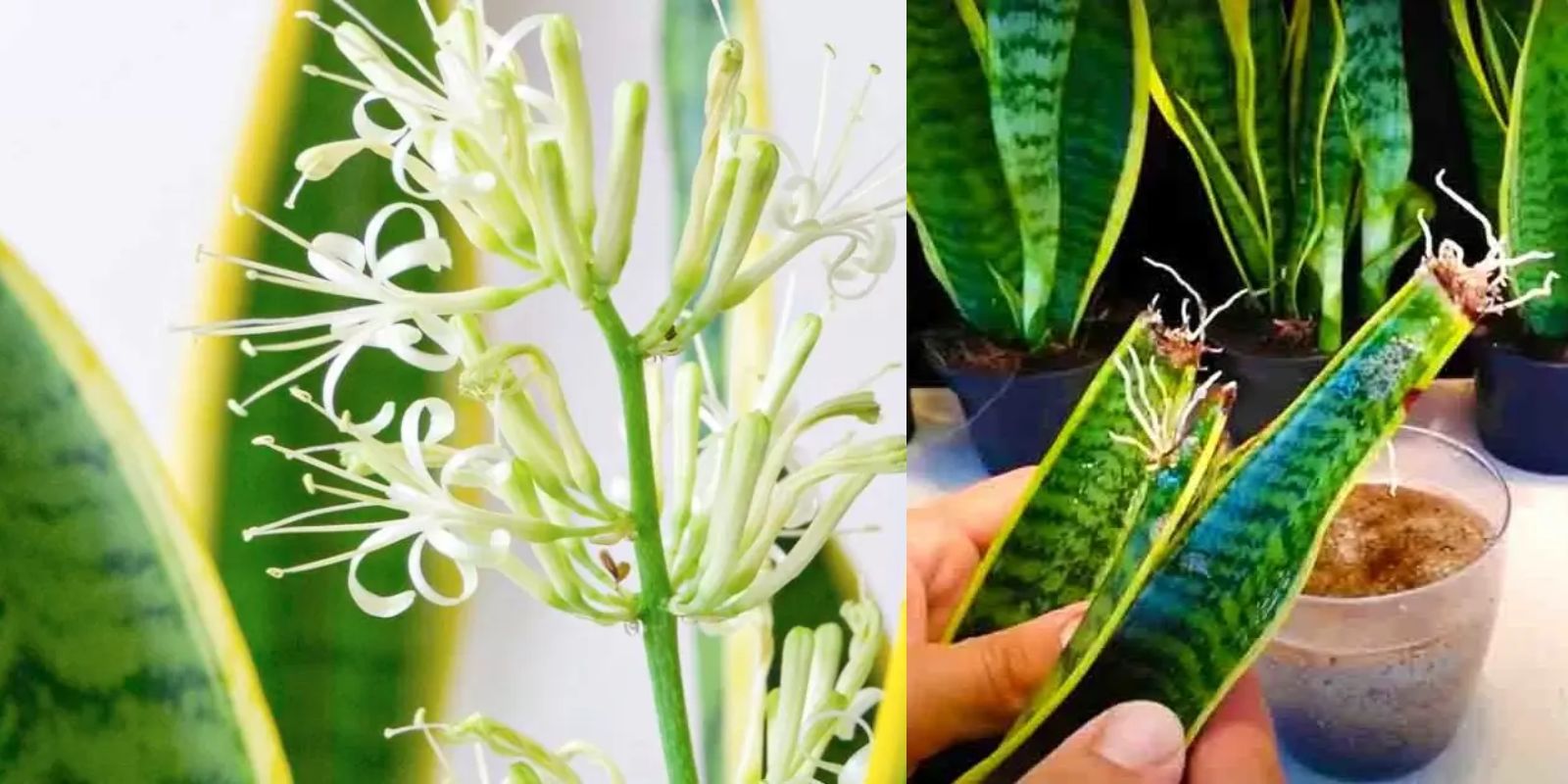The Mother-in-Law’s Tongue, scientifically known as Sansevieria trifasciata, is a popular houseplant celebrated for its striking, upright leaves and air-purifying abilities. This hardy succulent, also called Snake Plant, is known for its tolerance to low light and neglect. However, did you know that with the right care, it can also produce stunning flowers? While these blooms are less common, they can fill your home with a delightful fragrance, adding to the charm of this already impressive plant. In this article, we will delve into how to make your Mother-in-Law’s Tongue bloom, transforming your living space into a fragrant oasis.
Understanding the Mother-in-Law’s Tongue
Before we explore the steps to encourage blooming, let’s understand a bit more about this fascinating plant. Native to Africa, the Mother-in-Law’s Tongue has thick, sword-like leaves that can grow several feet tall. These leaves are typically dark green with lighter green stripes, making them visually striking. The plant is known for its resilience and can thrive in various conditions, which is part of its appeal.
Why Does the Mother-in-Law’s Tongue Bloom?
The Mother-in-Law’s Tongue flowers in response to specific conditions, typically when the plant is healthy and mature. The blooms are typically tubular and grow on tall spikes, appearing in clusters. When the plant is ready to bloom, it sends out a long flower stalk that rises above the leaves, culminating in clusters of small, fragrant white or pale green flowers.
Important Note: While the flowers can be beautiful and fragrant, not all Mother-in-Law’s Tongue plants will bloom, and some may take years to do so. Factors such as light, temperature, and care significantly influence the likelihood of flowering.
Steps to Encourage Blooming
Now, let’s look at the essential steps you can take to encourage your Mother-in-Law’s Tongue to bloom:
1. Provide Optimal Light
Light Requirements:
- Position your plant in a spot that receives bright, indirect sunlight. While the Snake Plant can tolerate low light, bright conditions will promote growth and increase the chances of blooming.
Avoid Direct Sunlight:
- Direct sunlight can scorch the leaves, leading to damage and inhibiting blooming. Ideally, a north or east-facing window is best for the Snake Plant.
2. Maintain Proper Watering
Watering Schedule:
- One of the key aspects of caring for the Mother-in-Law’s Tongue is managing its watering needs. This plant prefers to dry out between waterings. Allow the top inch of soil to dry completely before watering again.
Signs of Overwatering:
- Overwatering can lead to root rot, which is detrimental to the plant’s health and can prevent flowering. If the leaves start turning yellow or becoming mushy, reduce your watering frequency.
3. Use Well-Draining Soil
Soil Type:
- A cactus or succulent potting mix is ideal for Mother-in-Law’s Tongue. This type of soil ensures excellent drainage, preventing excess moisture from accumulating around the roots.
Soil Preparation:
- If you make your own potting mix, combine regular potting soil with perlite or coarse sand to improve drainage.
4. Fertilize During the Growing Season
Fertilization Schedule:
- During the growing season (spring and summer), feed your Mother-in-Law’s Tongue with a balanced, water-soluble fertilizer. Aim for a fertilizer that has an NPK ratio of about 10-10-10.
Frequency:
- Fertilize once a month during the growing season to support healthy growth and encourage blooming. Be cautious not to over-fertilize, as this can harm the plant.
5. Create a Stressful Environment
Root-Bound Conditions:
- Interestingly, slightly stressing the plant can encourage it to bloom. Allowing the Mother-in-Law’s Tongue to become a bit root-bound—where the roots have filled the pot—can stimulate flowering.
Repotting:
- Consider repotting every two to three years. When repotting, choose a pot that is only slightly larger than the current one. This helps maintain the ideal root-bound condition while allowing for healthy growth.
6. Be Patient
Growth and Blooming Timeline:
- Blooming can take time, so patience is essential. Many Snake Plants do not bloom until they are several years old, and some may never bloom at all.
Enjoy the Foliage:
- While waiting for flowers, enjoy the unique foliage and air-purifying benefits of your plant. Even without blooms, the Mother-in-Law’s Tongue adds beauty to your home.
Additional Care Tips
Temperature and Humidity
Ideal Conditions:
- Mother-in-Law’s Tongue thrives in temperatures between 60°F and 80°F (15°C to 27°C). Avoid exposing the plant to temperatures below 50°F (10°C) and ensure it is not placed in drafty areas.
Humidity Levels:
- This plant tolerates low humidity levels, making it an excellent choice for homes and offices.
Pests and Diseases
Common Issues:
- While the Mother-in-Law’s Tongue is generally pest-resistant, it can occasionally suffer from mealybugs, spider mites, or scale insects. Regularly inspect the leaves and treat any infestations promptly with insecticidal soap or neem oil.
Root Rot Prevention:
- Root rot is the most common issue with Snake Plants. Ensure proper watering and well-draining soil to prevent this problem.
Conclusion: Embrace the Journey of Growth
Encouraging your Mother-in-Law’s Tongue to bloom can be a rewarding experience. By providing the right conditions—optimal light, proper watering, well-draining soil, and the occasional dose of fertilizer—you can enhance the likelihood of beautiful blooms. Remember that patience is key, as this process can take time. Even without flowers, the Mother-in-Law’s Tongue is a remarkable plant that adds beauty and fresh air to your home.
So, get ready to enjoy the journey of nurturing your Snake Plant. As you care for it and encourage those elusive flowers, you’ll cultivate not only a stunning plant but also a deeper appreciation for the art of gardening. Happy gardening! 🌼
#MotherInLawsTongue #Sansevieria #IndoorGardening #PlantCare #BloomingPlants #Houseplants #GardeningTips #HomeFragrance

